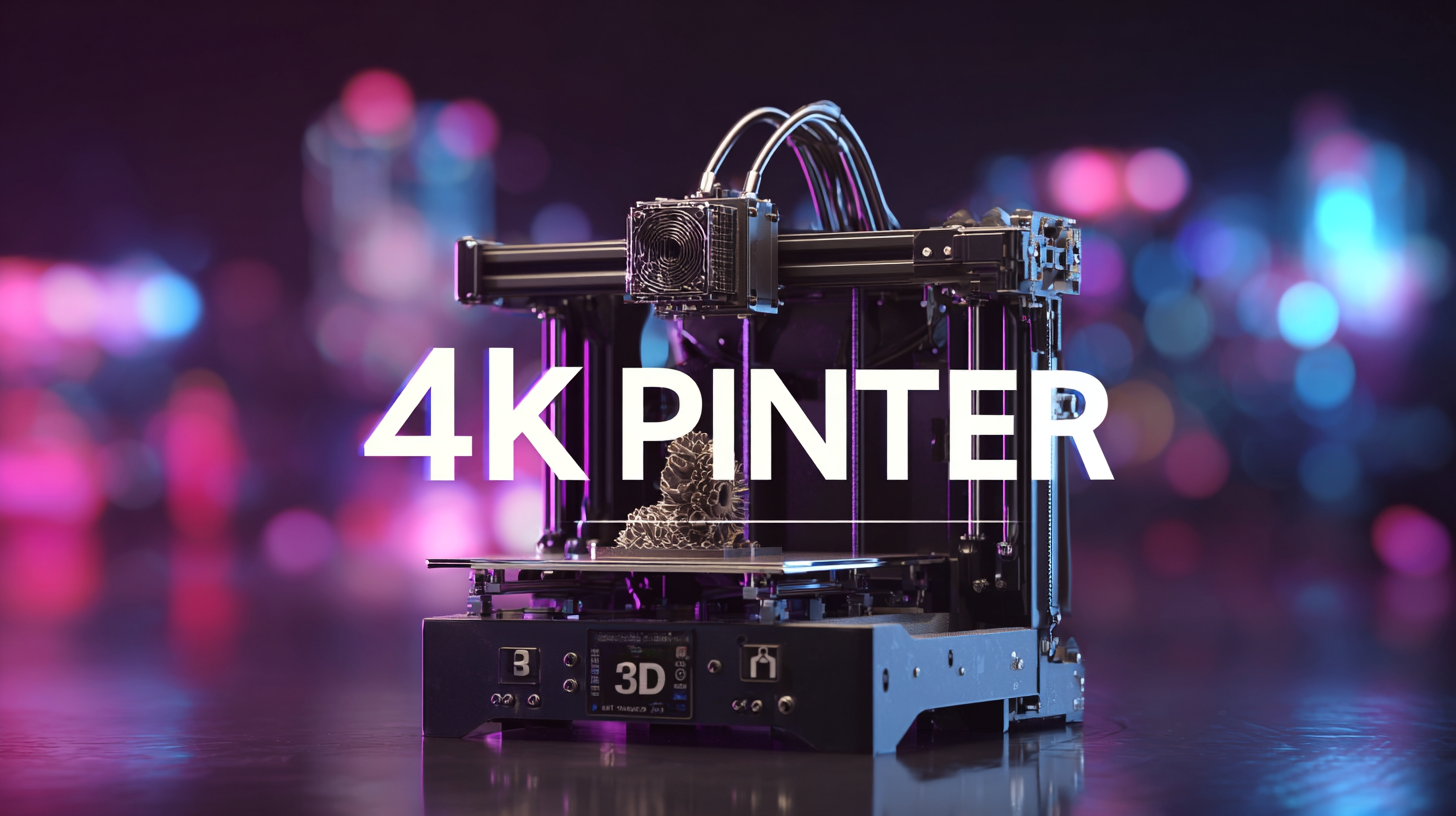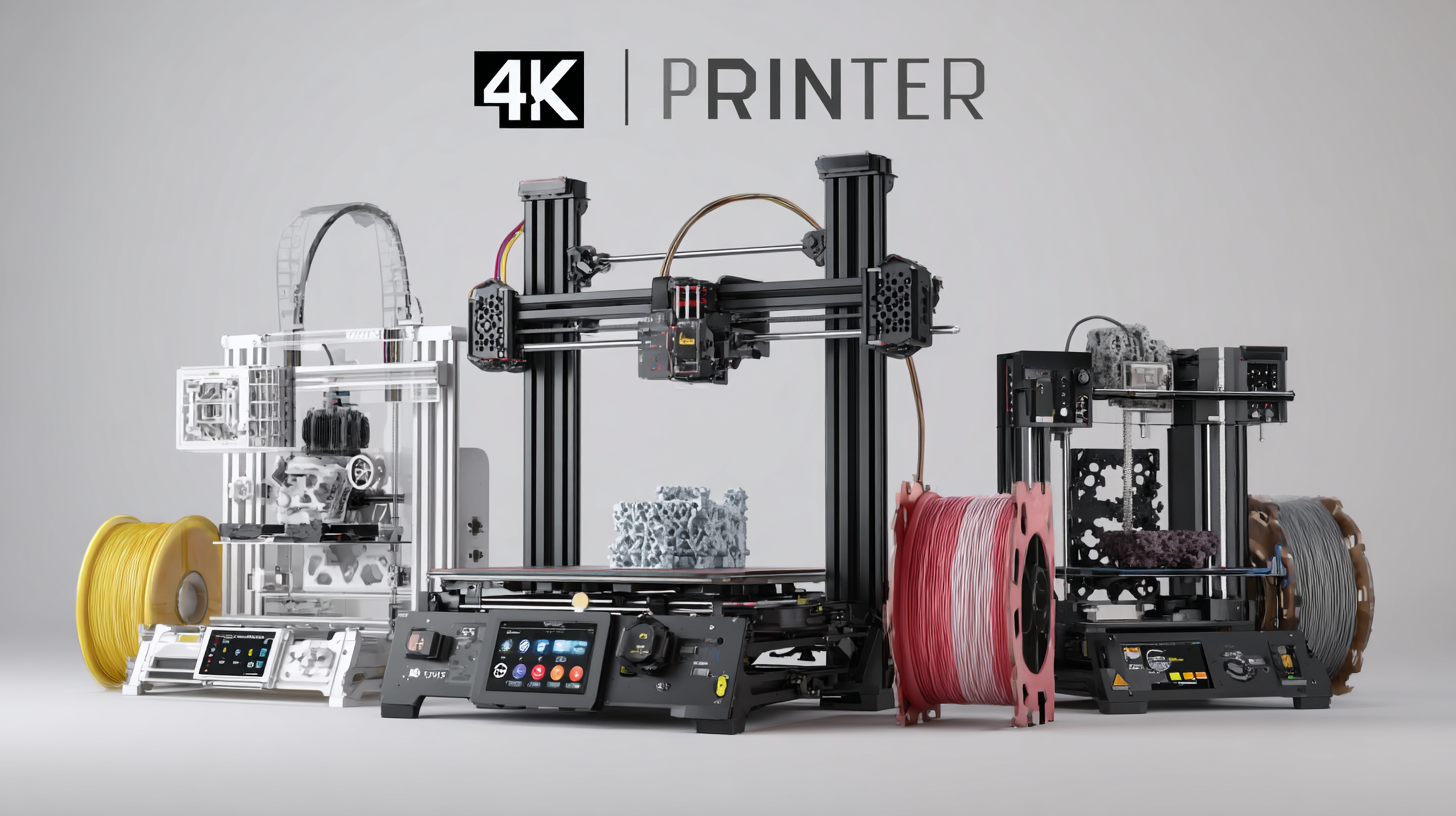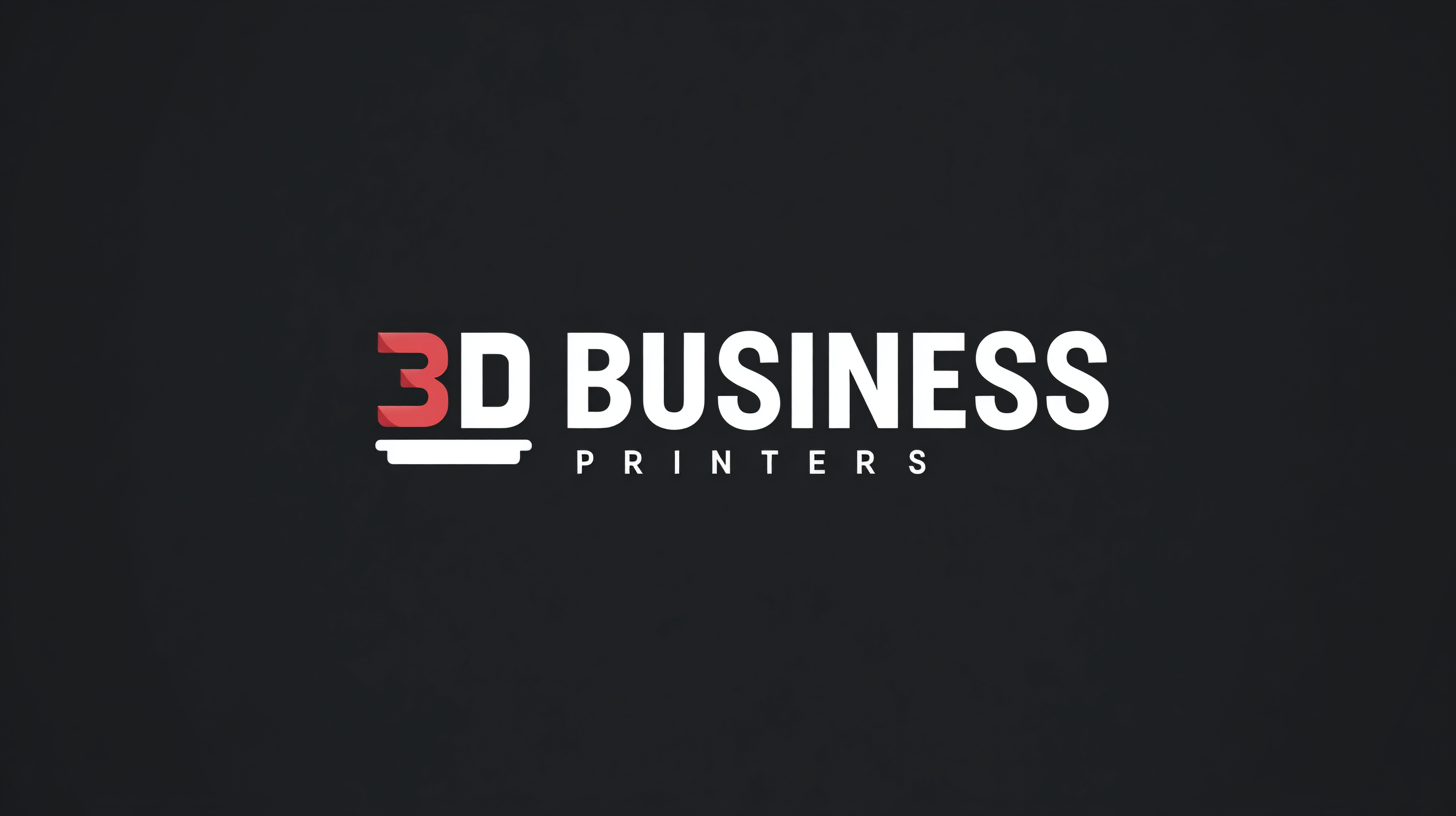Unlocking Industry Standards for 3D Printers How to Choose the Best Fit for Your Business Needs
As industries worldwide continue to embrace digital transformation, the demand for efficient and cost-effective solutions has led to a significant increase in the adoption of 3D printers for business. According to a report from MarketsandMarkets, the global 3D printing market is expected to grow from $15.3 billion in 2020 to over $34.8 billion by 2026, reflecting a compound annual growth rate (CAGR) of 14.4%. This rapid expansion underscores the importance of selecting the right 3D printer that aligns with specific business needs.
With a myriad of options available, understanding industry standards becomes crucial. In this blog, we will explore how to navigate the complex landscape of 3D printing technology, ensuring that businesses not only unlock their manufacturing potential but also pave the way for future innovations.

China's manufacturing capabilities play a pivotal role in this landscape, providing businesses around the globe with products that are not only innovative but also economically viable, thereby reinforcing the notion that excellence in manufacturing can indeed stem from China and serve the world.
Market Overview: Trends in 3D Printing Adoption Across Industries
As industries continue to embrace smart manufacturing, the growth of 3D printing technologies is becoming increasingly significant. The U.S. smart manufacturing market was valued at $59.8 billion in 2022 and is projected to grow from $66.18 billion in 2023 to $145.57 billion by 2030, indicating a robust demand for innovative manufacturing solutions. The 3D printing market, especially within manufacturing, is expected to witness a compound annual growth rate exceeding 15% from 2023 to 2032, driven by the need for cost reduction and efficiency in production processes.
When considering 3D printing solutions for your business, it's essential to evaluate specific needs. **Tip 1:** Analyze the materials you plan to use—different 3D printing technologies, such as FDM or SLA, are compatible with various materials. **Tip 2:** Assess the volume and scale of your production. For high-volume needs, look into systems that offer faster print speeds without compromising quality.
Moreover, the healthcare sector is also capitalizing on 3D printing advancements, with applications ranging from prosthetics to bioprinting. **Tip 3:** Stay updated on market trends, as rapid developments can present new opportunities and efficiencies for your operations. Choosing the right 3D printing technology hinges on a clear understanding of these market dynamics and aligning them with your business objectives.
Evaluating Material Options: Key Factors for Choosing Your 3D Printer
When it comes to choosing the best 3D printer for your business needs, evaluating material options is crucial. Different applications require distinct materials, and understanding these variations can significantly impact your production quality and costs. For instance, metal and plastic sintering, as well as photopolymerization, offer unique advantages and challenges. Selecting the right material not only determines the durability and functionality of your printed products but also influences the overall efficiency of the printing process.
**Tip:** Always assess the specific requirements of your projects. Are you focusing on prototypes, end-use parts, or intricate designs? Identifying the purpose will help in narrowing down the material choices effectively.
Furthermore, familiarize yourself with the latest innovations in materials. Innovation frequently leads to improved performance characteristics and cost-effectiveness. As highlighted in a recent white paper from a leading 3D printing service, understanding the developments in metal, plastic, and photopolymer materials is essential to staying competitive in the industry.
**Tip:** Consider future scalability when selecting materials. Your initial choice should accommodate not just current needs but also potential expansions or changes in your product line as you grow your 3D printing business.

Cost Analysis: Understanding the Financial Investment of 3D Printing
When considering the integration of 3D printing into your business operations, a detailed cost analysis is essential in understanding the financial implications. Recent studies indicate that the average cost of industrial 3D printers ranges from $20,000 to over $1 million, depending on the technology and capabilities. Notably, a report by SmarTech Analysis highlights that materials often contribute to 30-50% of the total operational costs, underscoring the importance of selecting the right filament or resin for your projects.
To maximize your investment, consider this tip: always conduct a thorough cost-benefit analysis. Factor in not only the upfront costs of the printer but also the long-term operational expenses, including maintenance, materials, and potential labor costs involved in operating these machines.
Another tip for businesses is to evaluate their projected volume of production. If your operations demand rapid prototyping or smaller batch production, more affordable options like FDM printers might be sufficient. Conversely, for intricate designs and higher precision, investing in SLA or SLS technologies could be necessary, despite their higher initial investment, as they offer better resolution and surface finish, leading to reduced post-processing time and costs.
Unlocking Industry Standards for 3D Printers: Cost Analysis of 3D Printing Investment
| 3D Printer Type | Initial Cost ($) | Material Cost per kg ($) | Maintenance Cost per Year ($) | Average Print Speed (mm/s) | Target Industries |
|---|---|---|---|---|---|
| FDM | 1,500 | 25 | 300 | 60 | Prototyping, Education |
| SLA | 5,000 | 70 | 600 | 30 | Jewelry, Dental |
| SLS | 10,000 | 90 | 1,200 | 50 | Aerospace, Automotive |
| DLP | 4,000 | 65 | 500 | 40 | Healthcare, Electronics |
| Multi Jet Fusion | 20,000 | 120 | 2,000 | 90 | Manufacturing, Functional Prototypes |
Technical Specifications: What Features Make a 3D Printer Stand Out?
When selecting a 3D printer, understanding the key technical specifications can significantly impact your business's operational efficiency and product quality. One essential feature to consider is the printer's resolution, often measured in microns. A lower micron count generally indicates better detail and surface finish, which is vital for industries requiring high precision, such as medical or aerospace applications. Additionally, the build volume should align with the scale of your projects; a larger build space can accommodate bigger prototypes or multiple smaller prints, increasing productivity and versatility.

Case Studies: Successful 3D Printing Implementations in Various Sectors
In recent years, the adoption of 3D printing technology has surged across diverse sectors, with companies reporting significant improvements in efficiency and cost-effectiveness. According to a report by Gartner, by 2025, 70% of manufacturers will be using 3D printing to support their supply chains. This shift is evident in case studies from various industries, illustrating the transformative potential of this technology.
For example, in the aerospace sector, companies like Boeing implemented 3D printing for producing lightweight components, which led to a 30% reduction in manufacturing costs and a substantial decrease in material waste. Similarly, in the healthcare industry, 3D printing is revolutionizing the production of personalized medical devices. A study published in the Journal of Medical Devices highlights that hospitals using 3D printing have reduced the time taken to produce custom prosthetics by up to 75%, leading to quicker patient turnaround and improved outcomes.
These case studies not only showcase successful implementations but also underline the importance of aligning 3D printing capabilities with specific business needs. As organizations continue to explore the advantages of this technology, understanding the unique demands and applications within their sectors is crucial for maximizing the benefits of 3D printing solutions.